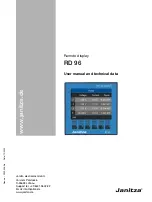
Lucent Technologies Lineage
®
2000 ECS Battery Plant H569-403
Issue 4 February 1997
Engineering, Planning, and Ordering 3 - 3
•
the maximum recharging voltage, and
•
the initial charging method.
EQUALIZE or BOOST charging is recharge capacity greater
than the float voltage.
Rectifier and load equipment voltage ranges are associated with
typical battery voltage ranges. For batteryless plants, skip to
paragraph “Load Drain and Growth.”
A BATTERY STRING consists of a number of battery cells
connected in series to provide the desired plant operating
voltage. Although virtually any plant voltage is possible by
varying the number of cells per string, this manual deals
specifically with NOMINAL 24 VOLT systems.
The NOMINAL CELL VOLTAGE of lead-acid-type batteries is
usually defined as 2 volts. The actual recommended float voltage
of lead-acid batteries differs slightly among vendors and varies
with chemistry. The most common float voltages are 2.17, 2.27
and 2.35 volts per cell.
Nominal 24 volt systems typically use 12 cell battery strings for
float voltages that range from 26.04 to 28.20 volts per string.
Lucent KS-type flooded lead-acid batteries float at 2.17 volts per
cell (26.04 volts per string).
Customers should select a battery type and vendor based on their
maintenance and replacement strategies, weighing initial cost,
expected life, service requirements and replacement cost against
each other. Once the battery is chosen, the following information
is needed for the battery plant engineering process.
f.
Float voltage per cell: ____ volts
g. Minimum cell voltage at end of discharge: ____ volts
h. Is boost or equalize charging recommended? ____ (yes
or no; boost or equalize charging is not recommended
for the Lucent VR Series battery)
If yes, the maximum recharging voltage per cell:
____ volts
i.
Maximum initial charging voltage per cell: ____ volts
j.
Number of cells per string: ____
















































